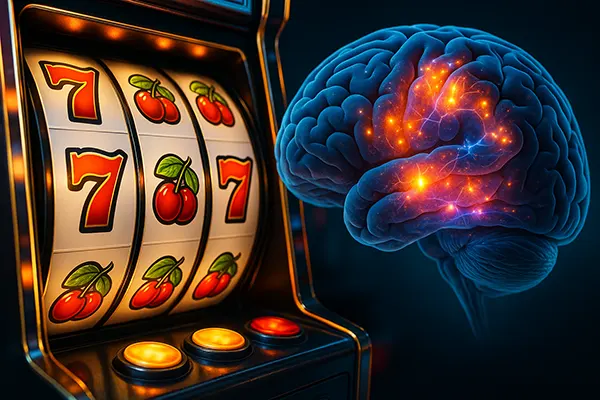
Near Miss Syndrome: How Slot Machines Manipulate Emotions
Slot machines are no longer mere mechanical devices driven by luck. They have evolved into sophisticated systems engineered to influence human behaviour. Among the most psychologically potent tactics used is the “near miss” effect — a phenomenon that makes players feel like they almost won, triggering a compelling urge to continue playing.
The Neurological Response to Near Misses
Modern neuroscience has uncovered how near misses stimulate brain regions similar to those activated during actual wins. Studies using fMRI scans show heightened activity in the striatum and anterior insula when a near miss occurs — areas tied to reward processing and emotional reaction.
This effect is deceptive. While the player did not win, the brain still reacts with a sense of anticipation and motivation, almost indistinguishable from that of a real win. It creates a loop of heightened emotional engagement, encouraging repeated play despite losses.
Professor Luke Clark from the University of Cambridge highlighted this cognitive trap, noting that near misses produce “an illusion of skill,” making players feel they are improving or coming closer to winning, even in games of pure chance.
What Brain Scans Reveal
Research in neuropsychology confirms that near misses activate the mesolimbic dopamine system — the same network involved in drug addiction. This chemical stimulation reinforces gambling behaviour, similar to how social media exploits dopamine loops.
Even when losses are financially and emotionally draining, the brain interprets near misses as partial victories. This cognitive dissonance leads individuals to chase losses, believing they are on the verge of success.
In effect, slot machines are designed not just to entertain but to condition behaviour by exploiting neural responses beyond conscious control.
Designing Near Misses: A Deliberate Mechanism
The presence of near misses in slot games is not accidental. Game developers intentionally design algorithms that deliver these outcomes at calculated intervals. It’s a psychological strategy that blurs the boundary between chance and skill, subtly manipulating player perception.
Manufacturers fine-tune the frequency of near misses to maintain engagement without causing discouragement. Too many, and players might become frustrated; too few, and they lose interest. It’s a delicate balance optimised for maximum profit.
Regulatory bodies in some jurisdictions have begun to scrutinise this practice. Nonetheless, the majority of slot software remains proprietary and opaque, making external audits challenging and infrequent.
The Role of RNG and Visual Feedback
Random Number Generators (RNGs) govern outcomes in slot games, but the display of reels is crafted to heighten tension. Developers ensure near hits — two jackpot symbols and one just above or below — appear more often than statistical chance would dictate.
This visual manipulation leads to the illusion of control. Players perceive patterns or momentum where none exist, falsely believing they can influence outcomes through persistence or timing.
The psychological weight of near misses is amplified through sound effects and animations, reinforcing the perception of success even in failure.

Social Media Parallels and the Dopamine Trap
The near miss effect mirrors patterns found in digital environments like social media platforms. Just as users scroll for intermittent rewards — likes, shares, or comments — gamblers continue spinning in search of elusive wins.
Both systems exploit intermittent reinforcement schedules, where rewards are random and unpredictable. This model is known to be the most addictive in behavioural psychology, fostering compulsive use.
The sense of anticipation generated by a near miss operates like the partial satisfaction of a social media notification. It’s a stimulus that triggers dopamine, compelling users to repeat the behaviour despite minimal or no actual reward.
Psychological Consequences and Long-Term Impact
Repeated exposure to near misses can distort risk perception. Players begin to overestimate their chances of winning, leading to riskier betting behaviour and prolonged gambling sessions.
Clinical psychologist Dr. Mark Griffiths explains that near misses are among the most potent psychological reinforcers in gambling. They manipulate the player’s emotional landscape, often leading to problem gambling or addiction.
Understanding this mechanism is essential for harm reduction. Public awareness and regulatory oversight must evolve to address these subtle, yet powerful, forms of behavioural engineering.
